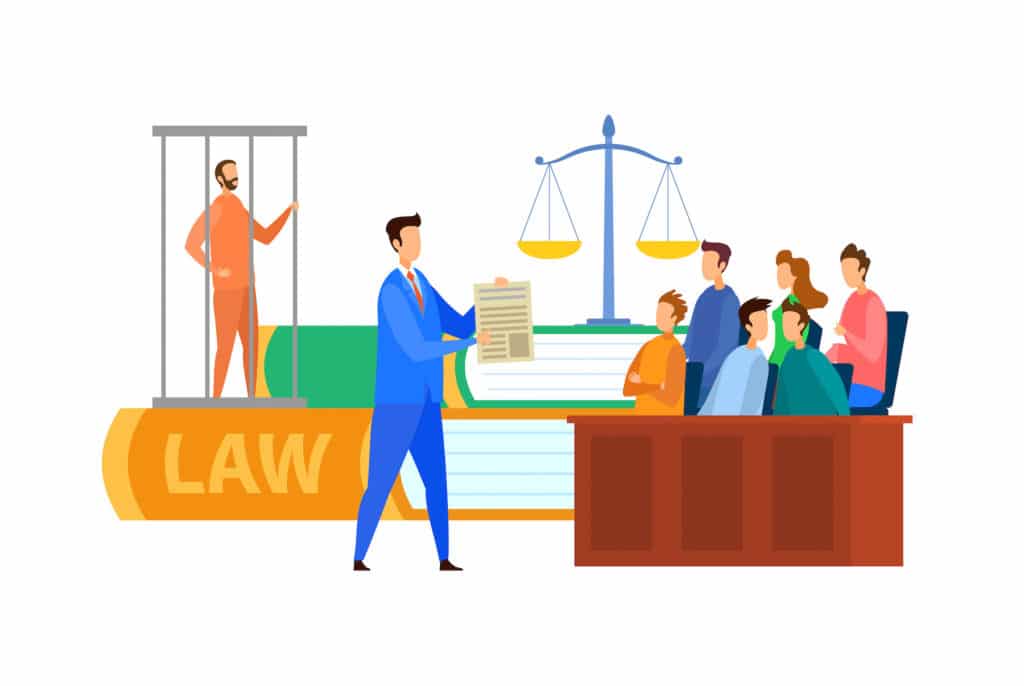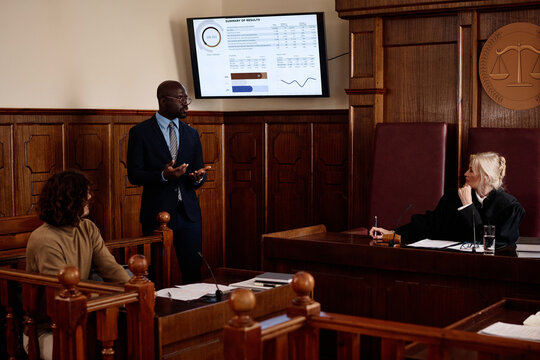The Duty of Aesthetic Aids in Successful Trial Presentations: An Overview for Attorneys
The Duty of Aesthetic Aids in Successful Trial Presentations: An Overview for Attorneys
Blog Article
Navigating the Intricacies of Test Presentations: Tips for Seamless Delivery and Engaging Arguments
In the world of lawful process, the art of trial presentation stands as an important factor of success. The intricacies inherent in test discussions require a delicate balance of approach, ability, and finesse.

Comprehending Test Goals
To effectively navigate a trial, it is vital to have a clear understanding of the objectives that need to be accomplished. Prior to entering the courtroom, legal teams have to define their objectives and desired outcomes. These objectives work as assisting concepts throughout the trial, shaping approaches and affecting decision-making procedures.
Understanding trial purposes involves a thorough evaluation of the case, legal precedents, and the customer's benefits. Trial Presentations. It requires a thorough examination of the truths, determining crucial problems, and expecting prospective obstacles. By setting specific and quantifiable objectives, lawyers can tailor their presentations and debates to straighten with the desired outcomes
Furthermore, a clear grasp of trial objectives enables lawful teams to focus on proof, witnesses, and legal disagreements properly. It permits the growth of a systematic story that reverberates with the judge and jury, strengthening the total case discussion.

Organizing Evidence Successfully
Having a clear understanding of trial purposes lays the foundation for organizing proof properly in legal proceedings - Trial Presentations. By lining up the discussion of proof with the desired outcomes of the trial, lawful groups can reinforce their debates and improve their persuasiveness. One important aspect of arranging evidence is categorization. Organizing evidence based upon motifs or importance to particular legal components can help streamline the discussion and make complex details a lot more digestible for the court or jury.
One more trick aspect in arranging evidence successfully is establishing a rational circulation. Providing proof in a coherent and consecutive manner can assist construct a compelling story that sustains the legal disagreements being made. In addition, using aesthetic help such as timelines, charts, or graphes can further enhance the company of proof and assist in making clear complex connections or series of occasions.
In addition, ensuring that all evidence offered is acceptable and relevant to the situation is essential. Unimportant or inadmissible evidence can interfere with the strength of the disagreement and possibly harm the reliability of today event. A meticulous testimonial and selection process need to be embarked on to consist of only the most impactful and lawfully audio proof in the test discussion.
Crafting Convincing Stories
Crafting engaging stories plays a crucial duty in offering influential disagreements throughout legal proceedings. When creating a narrative for a test presentation, it is vital to establish a clear storyline that highlights vital points and links them in a coherent manner. By weaving with each other evidence, testament, and legal disagreements into a influential and cohesive narrative, lawful specialists can successfully promote for their clients and enhance the likelihood of a favorable end result in the court.
Mastering Aesthetic Aids
Effective use of aesthetic aids is essential to improving the influence and clarity of test presentations. Visual help, when made use of strategically, have the power to simplify complex details, enhance bottom lines, and leave an enduring impression on the court and court. To master visual aids in trial discussions, it is critical to ensure that they browse around here are clear, succinct, and relevant to the debates being made.
When including aesthetic aids, such as graphes, timelines, charts, or pictures, into a trial discussion, it is important to keep them aesthetically appealing yet expert. The visuals need to enhance the verbal debates, giving a graph of the info being discussed without frustrating the target market with unnecessary information.
In addition, practicing with the visual help ahead of time is critical to make certain a seamless distribution throughout the test. Acquainting oneself with the content, changes, and timings of each visual help can help keep the circulation of the discussion and protect against technical glitches that might occur.
Providing Impactful Closing Disagreements
A compelling closing disagreement serves as the end result of a trial discussion, enveloping the core story and convincing the court and jury in the direction of a favorable decision. Begin by outlining the main disagreements that sustain your customer's position, emphasizing why the evidence offered throughout the test sustains your story.
Additionally, including sob story can better enhance your closing debate. By connecting and humanizing the case on an individual level with the decision-makers, you can evoke empathy and understanding, affecting their perception of the facts provided. In addition, reiterating the legal requirements that have to be fulfilled for a favorable ruling can enhance the validity of your setting. Inevitably, a well-crafted closing disagreement need to leave a long lasting perception, engaging the judge and jury to rule in your client's favor.
Conclusion
In final thought, understanding trial presentations entails recognizing objectives, organizing evidence, crafting narratives, this contact form utilizing aesthetic help, and supplying impactful closing arguments. By executing these techniques successfully, lawyers can present their case seamlessly and make engaging debates in the court room. It is important to navigate the complexities helpful site of trial discussions with precision and skill to achieve success in lawful process.
By aligning the presentation of evidence with the preferred end results of the trial, lawful teams can enhance their disagreements and improve their persuasiveness (Trial Presentations). To understand aesthetic help in trial discussions, it is vital to make sure that they are clear, succinct, and relevant to the disagreements being made
A compelling closing argument serves as the end result of a test discussion, encapsulating the core narrative and convincing the judge and jury in the direction of a desirable choice. Begin by detailing the primary arguments that sustain your customer's placement, emphasizing why the evidence offered throughout the test supports your narrative.In conclusion, mastering trial presentations includes understanding objectives, organizing proof, crafting narratives, utilizing visual help, and delivering impactful closing arguments.
Report this page